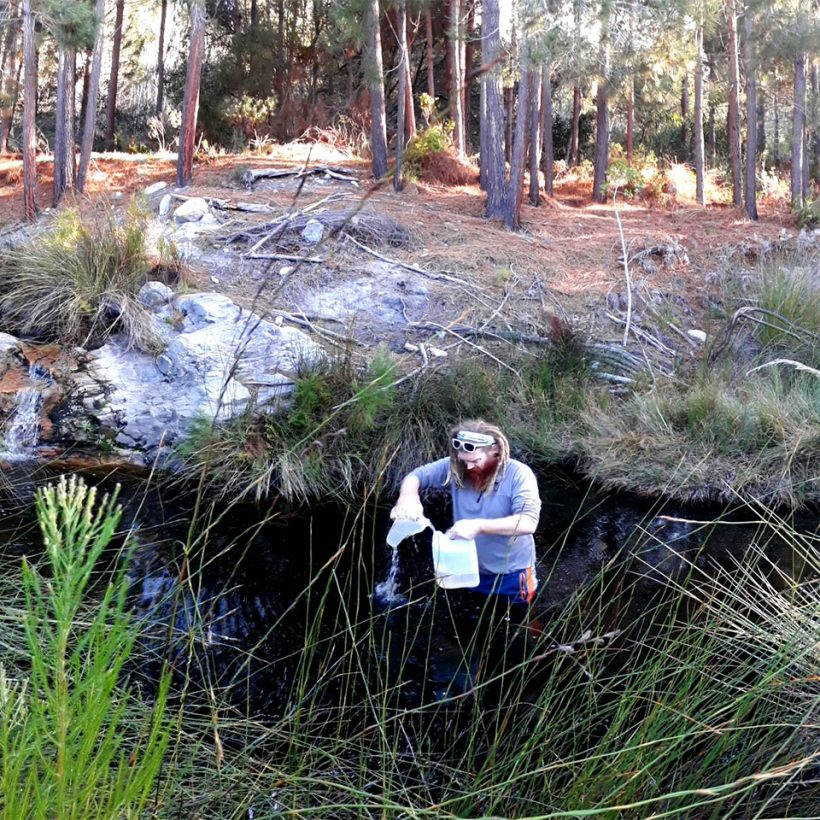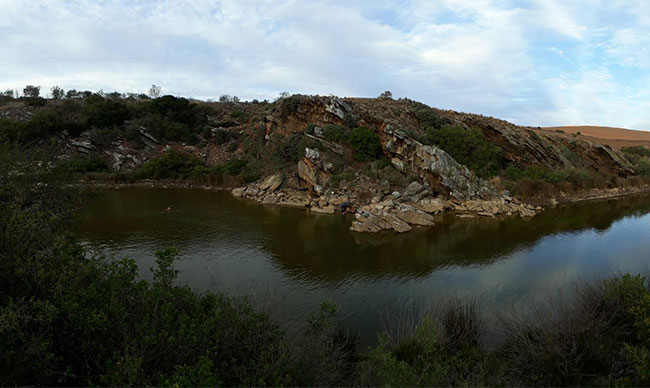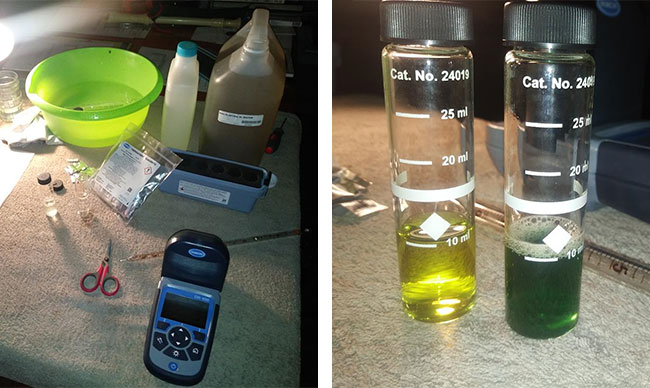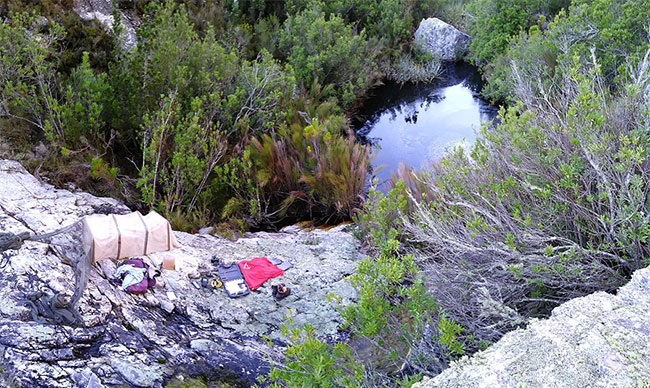On 22 March we celebrate World Water Day, a day about the importance of water for people, the environment and our biodiversity. In honour of World Water Day we take a closer look at the Masters research of Keir Lynch, an ORCT contractor and student with the University of Cape Town.
The focus of Keir’s research has been the little-studied indigenous fish of the Overberg’s Heuningnes River system, which flows from the Soetmuisberg eastwards into the lowlands within Overberg Renosterveld vegetation. All types of Renosterveld in the Overberg are considered ‘Critically Endangered’, owing to fragmentation and extensive and ongoing illegal ploughing for agriculture. Watercourses within this fragmented ecosystem are often polluted with agricultural chemicals, used as dumping grounds for rubbish and suffer from soil erosion due to insufficient buffer zones during ploughing.
The main focus of the project is the Critically Endangered Heuningnes Redfin (Pseudobarbus sp.). The fine scale distribution of this indigenous fish within the Heuningnes River system (encompassing the Kars, Nuwejaars and Heuningnes Rivers) is currently data deficient and urgently in need of research to facilitate effective conservation management of this species. This research aims to quantify human impacts on the species, including effects of non-native species, water pollution, water abstraction and habitat transformation.
Key research questions in Keir’s MSc address the distribution of native and non-native fish within the Kars River and its tributaries, while assessing the role of water quality, land use, vegetation buffer zones and stream characteristics on Heuningnes Redfin populations. The distribution of fish was sampled through use of fyke and seine nets which were set up at 17h00 in the afternoon and collected before 8h00 the next morning. A fyke net is a funnel shaped net that fish can swim inside that is used for biodiversity surveys. A seine net hangs vertically in the water with floats on the top and weights on the bottom that encircles the fish. Fish caught within these nets were identified, measured and released.
Data was also collected on width and depth of the stream/river, vegetation in and along the watercourse as well as any signs of erosion. Water quality was also regularly sampled at each study site, with data collected at different times of year to properly understand the impact of agricultural activities in the surrounding area on each watercourse.
Preliminary results suggest a lower indigenous fish species diversity or a lack of presence in watercourses where there are populations of non-native fish species such as Spotted Bass and Bluegill Sunfish. The Heuningnes Redfin is thought to be more sensitive to disturbance, water pollution and presence of non-native fish species than other indigenous fishes from the Overberg area. It is therefore likely to be present in larger numbers in areas where habitat quality is higher and adequate vegetation buffer zones adjoin the watercourse.
Furthermore, intact vegetation buffer zones are likely to reduce the sediment load transported into watercourses, thus higher water quality is likely in these areas. Fine scale GIS mapping undertaken as part of this research will help to better understand the relationship between land cover, land use and water quality in the river catchment.
Findings from this research will feed into developing a biodiversity management plan for the Heuningnes Redfin. Furthermore, data will also be used to inform the development of a conservation management strategy to control invasive fish species that have been introduced into the Heuningnes River system. It is hoped that these strategies combined will improve the conservation status of this and other imperilled species within the freshwater systems of the Overberg.






